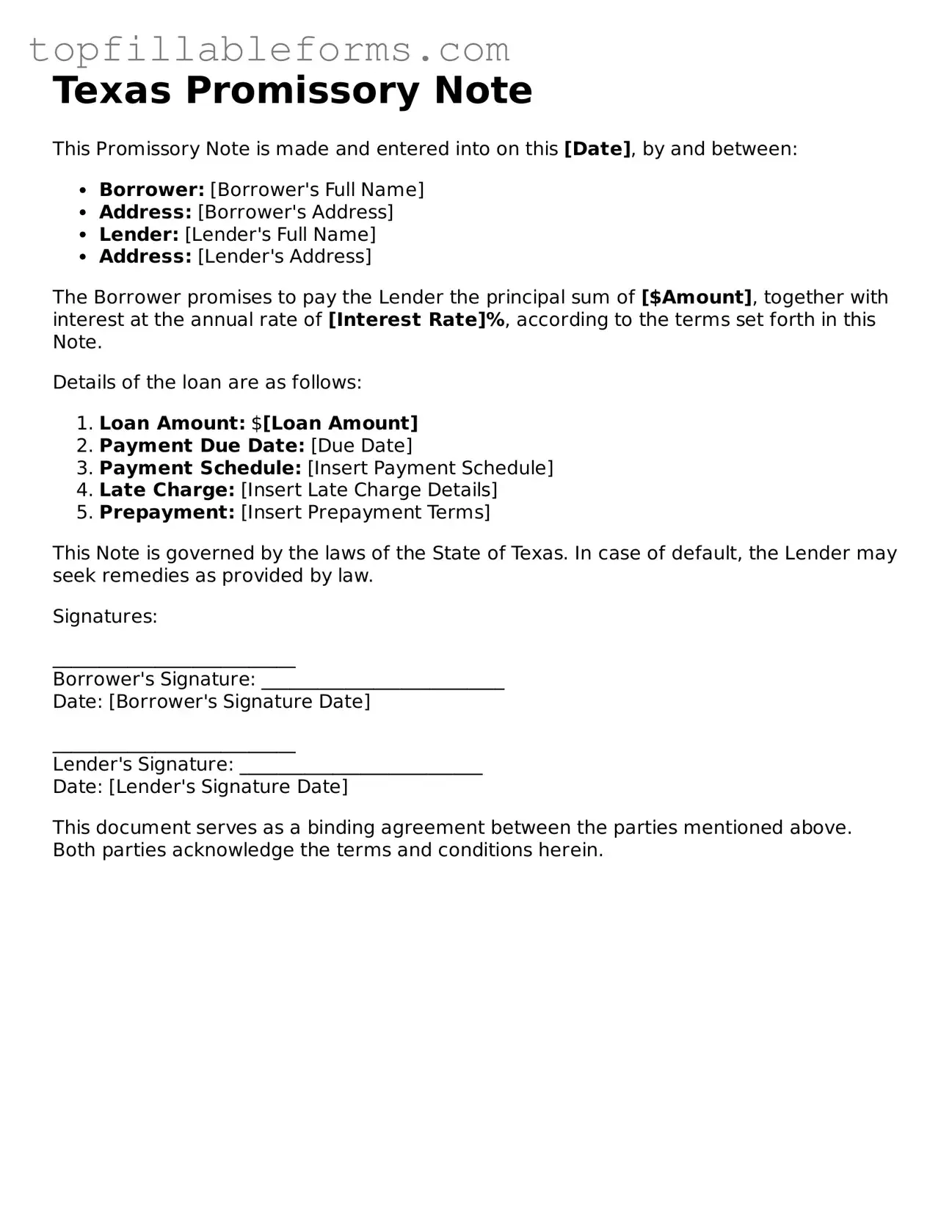Texas Promissory Note
This Promissory Note is made and entered into on this [Date], by and between:
- Borrower: [Borrower's Full Name]
- Address: [Borrower's Address]
- Lender: [Lender's Full Name]
- Address: [Lender's Address]
The Borrower promises to pay the Lender the principal sum of [$Amount], together with interest at the annual rate of [Interest Rate]%, according to the terms set forth in this Note.
Details of the loan are as follows:
- Loan Amount: $[Loan Amount]
- Payment Due Date: [Due Date]
- Payment Schedule: [Insert Payment Schedule]
- Late Charge: [Insert Late Charge Details]
- Prepayment: [Insert Prepayment Terms]
This Note is governed by the laws of the State of Texas. In case of default, the Lender may seek remedies as provided by law.
Signatures:
__________________________
Borrower's Signature: __________________________
Date: [Borrower's Signature Date]
__________________________
Lender's Signature: __________________________
Date: [Lender's Signature Date]
This document serves as a binding agreement between the parties mentioned above. Both parties acknowledge the terms and conditions herein.
